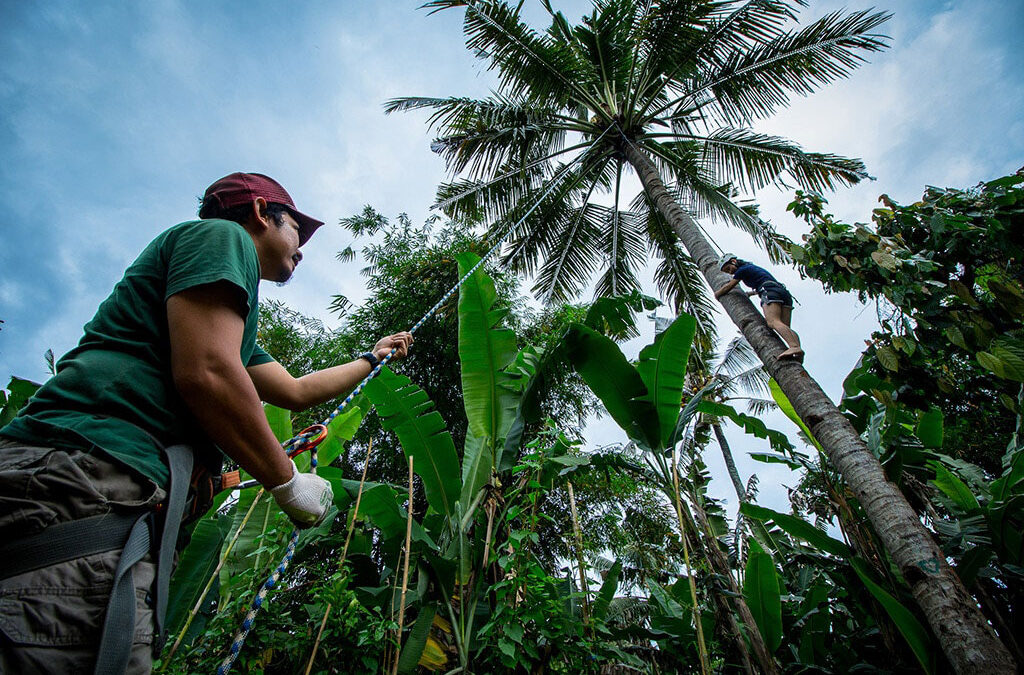You drink from it. You cook with it. You sunbathe beneath it. With its numerous uses, let’s take a closer look at why people go coo coo for coconuts.
The Tree Of Life
It’s a big claim, but coconuts live up to its label as the tree of life. They are important in Indonesia not just in the food sector, but play a role in economy, religion, culture, tourism, and the production of handicrafts. Indonesia is the world’s biggest producer of coconuts. Other top producers include the Philippines and India. No wonder, conditions conducive to coconut growth match the tropical country setting—high 20s to 30 degree Celsius temperatures, the soil like that in sandy beaches, and humidity.
Count The Uses
There’s an Indonesian saying that “there are as many uses for the coconut palm as there are days of the year.” Here are some parts of the coconut and its corresponding uses:
- Coconut water
A sports drink alternative and everyday refreshment; can also be made into coconut wine and vinegar. - Coconut meat
For creating coconut oil, milk, flour, sweet delicacies, and animal feed. - Coconut oil
Used as cooking oil. An ingredient for face, skin, and hair products for its moisturizing, anti aging and antiviral properties. - Coconut sap
When acquired from the flower blossoms of the coconut tree, can be made into coconut sugar, nectar and Aminos (a soy sauce alternative). - Roots
When boiled with water, the beverage can be used for treating skin itchiness, diarrhea and fever. Also used as mouthwash. - Trunk
Offers a durable material for construction (buildings, furniture); even paper can be produced. - Shell
A diverse material used in musical instruments, kitchen utensils (e.g.: bowls, spoons), to accessories (buttons, belt loops). - Husk
Resistant to saltwater, it’s used to weave ropes, nets, mats. A natural mosquito repellent when burned. Also rubbed over house floors as a buffer. - Leaves
Can be woven into baskets, hats, bags, and thatched roofs. Can be developed into fuel when burned.
In The Context Of Bali
For the highly spiritual Balinese, coconuts are a sacred staple when locals create their daily offerings to gods. Pay close attention to offerings found in Balinese streets, temples and storefronts and you’ll notice that coconut leaves take the form of plates, baskets, and temple decorations. When it comes to religious events, Vivienne Kruger in Balinese Food: The Traditional Cuisine & Food Culture of Bali illustrates: “Fresh, clean coconut water, with its restorative properties, is the standard drink that the Balinese offer to guests at home-based ceremonies.” While in cuisine, “Grated coconut flesh enters into almost every Balinese recipe. Frying of ingredients for dishes is done exclusively in coconut oil, and much of the food in Bali is simmered in either rich coconut cream or light coconut milk,” explains Kruger.
Now For The Fun Part
Look forward to these coconut-related activities during our camps:
- Coconut tree climbing
- Coconut sugar making
- Craft making with coconut leaves (from hats, headbands, to swords)
- Cooking with coconut juice
- Weaving traditional items like baskets with coconut leaves




